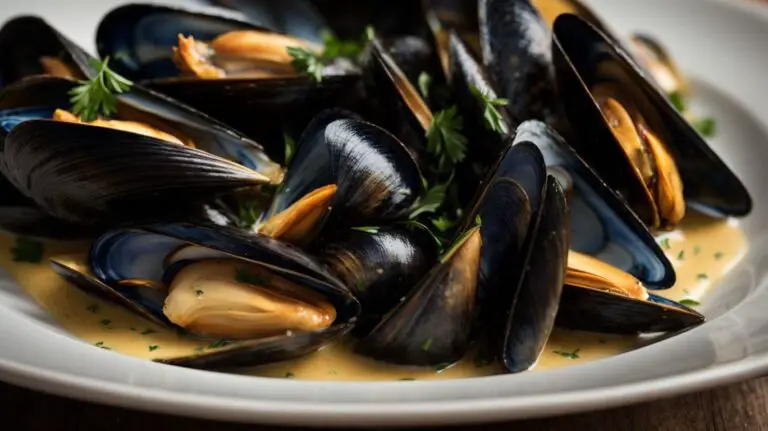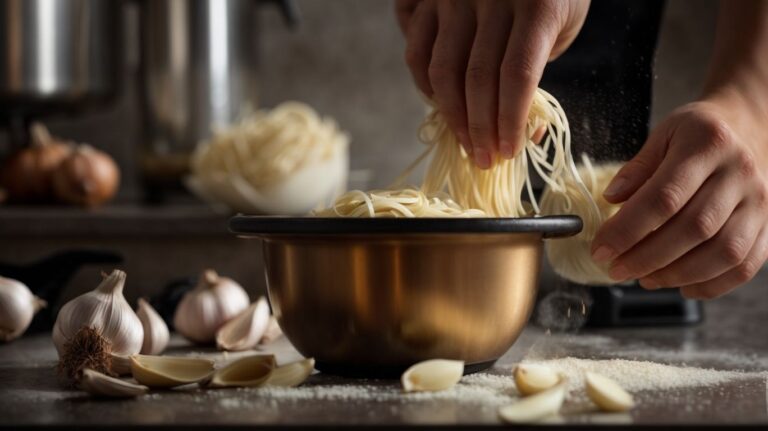How to Cook With Dried Mushrooms?
Are you looking to elevate your culinary skills and add a new depth of flavor to your dishes?
Dried mushrooms could be the secret ingredient you’ve been missing. In this article, we will explore the various types of dried mushrooms, how they differ from fresh mushrooms, and the best methods for rehydrating them.
We will also provide you with delicious recipes and tips on incorporating dried mushrooms into your cooking. Discover the benefits of cooking with dried mushrooms and learn how to properly store them for future use. Let’s get cooking!
Key Takeaways:
What are Dried Mushrooms?
Dried mushrooms are a versatile ingredient known for their intense earthy flavor that can elevate various dishes.
The process of drying mushrooms involves removing their moisture content through techniques like sun-drying, air-drying, or dehydration. This preservation method not only extends their shelf life but also intensifies their flavor, making them more potent when rehydrated.
Porcini mushrooms, for instance, develop a deep umami taste when dried, which enhances soups, risottos, and sauces. Other popular varieties like shiitake and morel mushrooms also concentrate their rich flavors during the drying process. Chefs often use dried mushrooms to infuse broths and stocks with a robust and complex taste profile.
Types of Dried Mushrooms
Common types of dried mushrooms include Button, Shiitake, and Porcini, each offering unique flavors and textures.
Button mushrooms are known for their mild and subtly earthy flavor, making them versatile for various dishes ranging from soups to stir-fries.
On the other hand, Shiitake mushrooms have a more robust, savory taste with a meaty texture, ideal for enhancing umami-rich dishes like stir-fries and broths.
As for Porcini mushrooms, they boast a strong, nutty flavor that adds depth to sauces, risottos, and pasta dishes, elevating them to gourmet levels.
The distinct textures of these mushrooms, from the tender bite of Button mushrooms to the chewy richness of Shiitake and the meat-like density of Porcini, offer a rich culinary palette to chefs and home cooks alike.
How are Dried Mushrooms Different from Fresh Mushrooms?
Dried mushrooms differ from fresh mushrooms in terms of flavor concentration, with dried mushrooms often exhibiting a more intense umami-rich taste.
When fresh mushrooms are dried, the moisture content decreases significantly, resulting in a more concentrated flavor. The drying process intensifies the umami notes present in mushrooms, making them ideal for adding depth and complexity to dishes. When rehydrated, dried mushrooms plump up and regain some of their original texture, although they tend to be chewier than fresh counterparts.
The concentrated flavor and chewy texture of dried mushrooms make them particularly well-suited for slow-cooked dishes like stews, soups, and sauces, where they can infuse the entire dish with their robust taste. Their intense umami profile pairs wonderfully with meats, grains, and vegetables, elevating the overall flavor profile of a dish.
How to Rehydrate Dried Mushrooms?
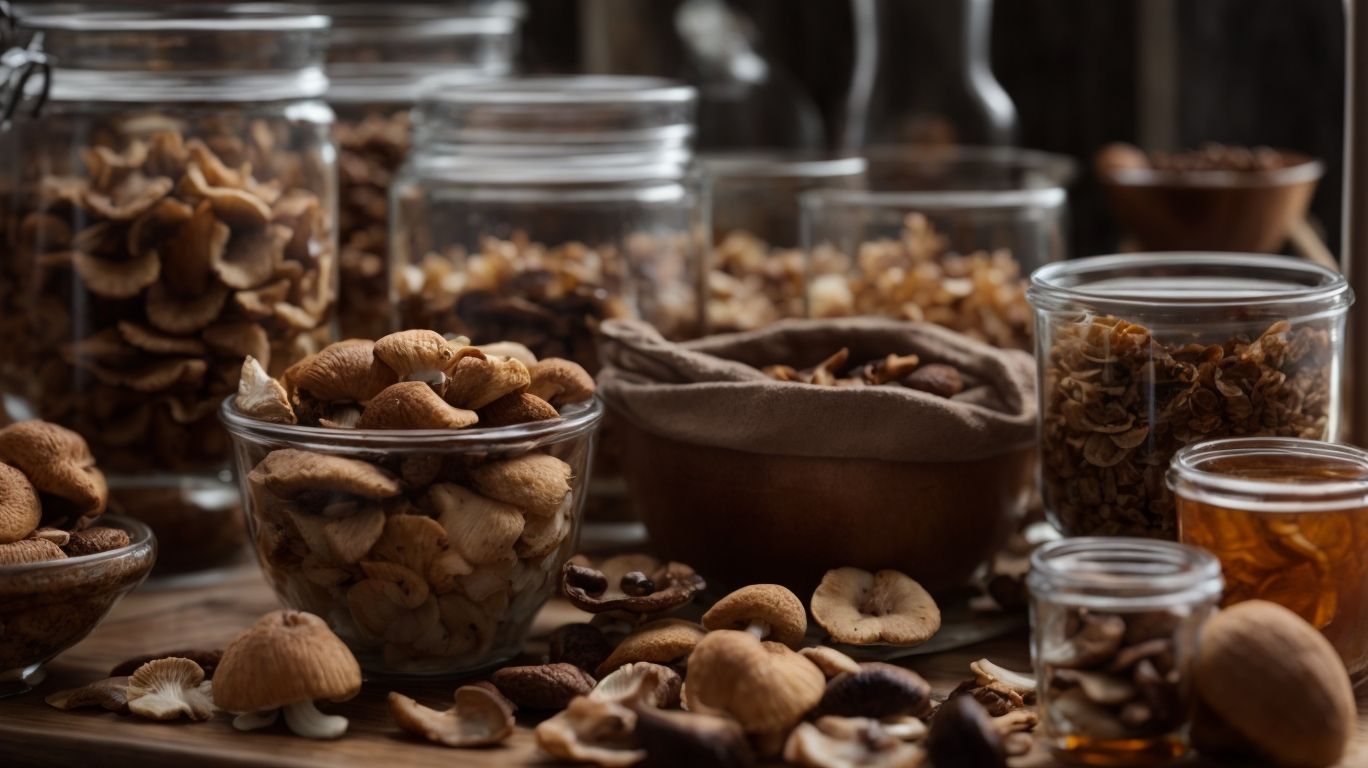
Credits: Poormet.Com – Joe Carter
Rehydrating dried mushrooms is a simple process that involves soaking them in water to restore their natural texture and flavor.
When rehydrating dried mushrooms, choosing the right temperature and duration for soaking is key to achieving the desired results. Typically, you’ll want to use room temperature water to soften the mushrooms effectively without compromising their flavor. Remember to cover the mushrooms completely with water, allowing them to plump up as they soak.
Proper hydration is crucial as it not only brings back the mushrooms’ original taste but also makes them versatile for various culinary applications. Whether you’re using them in soups, sauces, stir-fries, or pasta dishes, rehydrated mushrooms add a depth of flavor that elevates your dishes to a whole new level.
Methods for Rehydrating Dried Mushrooms
There are various methods for rehydrating dried mushrooms, including soaking them in broth or water for specific durations to infuse them with rich mushroom flavor.
When rehydrating dried mushrooms, the soaking time can significantly impact the intensity of their flavor. For a lighter taste, soak the mushrooms in broth or water for around 15-30 minutes. This method will give them a subtle mushroom essence that complements dishes like salads or omelets.
On the other hand, for a more pronounced mushroom flavor, opt for longer soaking durations of 1-2 hours or even overnight. This extended period allows the dried mushrooms to fully absorb the liquid, resulting in a bolder taste that enhances pasta dishes, sauces, and soups.
Tips for Rehydrating Dried Mushrooms
When rehydrating dried mushrooms, follow specific instructions such as soak times and temperature settings to maximize their flavor and texture in your dish.
For optimal results, the general rule of thumb is to soak dried mushrooms in cool water for at least 20-30 minutes. Some varieties like porcini or morel mushrooms may benefit from longer soaking periods of up to an hour to fully rehydrate.
It’s crucial to use lukewarm water rather than hot water, as high temperatures can lead to mushy mushrooms with a loss of flavor. Musty or unpleasant odors during soaking may indicate that the mushrooms are of poor quality and should be discarded.
How to Incorporate Dried Mushrooms into Your Cooking?
Dried mushrooms can be incorporated into your cooking to add a savory depth or used to create flavorful glazes for dishes like Italian stew.
One creative way to use dried mushrooms in recipes is by rehydrating them in hot water before adding them to dishes. This process not only revives the mushrooms but also infuses the dish with a rich umami flavor. For example, in a comforting Italian stew, soaking dried porcini mushrooms can create a luxurious broth base that elevates the overall taste. The earthy notes from the mushrooms complement the hearty vegetables and tender meat in the stew.
You can finely grind dried mushrooms into a powder and use it as a seasoning to intensify the flavors of sauces, rubs, or marinades. This versatile mushroom powder adds depth and complexity to various dishes, enhancing the overall taste profile. Whether sprinkled on pasta or mixed into meatloaf, the concentrated umami essence from the dried mushrooms will undoubtedly impress your taste buds.
Recipes that Use Dried Mushrooms
There are countless recipes that utilize dried mushrooms to create savory, umami-packed dishes with an Italian flair.
Dried mushrooms are prized for their intense flavor and ability to enhance the taste profile of various Italian-inspired dishes. Whether used in risottos, pasta sauces, or soups, they bring a deep richness that elevates the overall dish to new heights.
When incorporating dried mushrooms into your cooking, soaking them beforehand in warm water helps rehydrate them, allowing their full potential to shine through. This simple step brings out their earthy essence, ensuring they blend harmoniously with other ingredients.
Tips for Enhancing Flavors with Dried Mushrooms
To intensify flavors in your dishes, consider using homemade mushroom stock made from rehydrated mushrooms or incorporating fresh mushrooms alongside dried ones for a dynamic taste profile.
Homemade mushroom stock is a versatile ingredient that can elevate the taste of various dishes, from soups to risottos and sauces. The process involves soaking dried mushrooms, like porcini or shiitake, in hot water to extract their rich umami flavor, resulting in a robust and earthy base for your recipes.
- When combining fresh and dried mushrooms, you get the best of both worlds – the meaty texture of fresh mushrooms and the concentrated taste of dried ones.
- For an instant flavor boost, consider using mushroom liquid extracts in your cooking. These extracts are potent and can add depth and complexity to your dishes without the need for lengthy stock preparation.
What are the Benefits of Cooking with Dried Mushrooms?
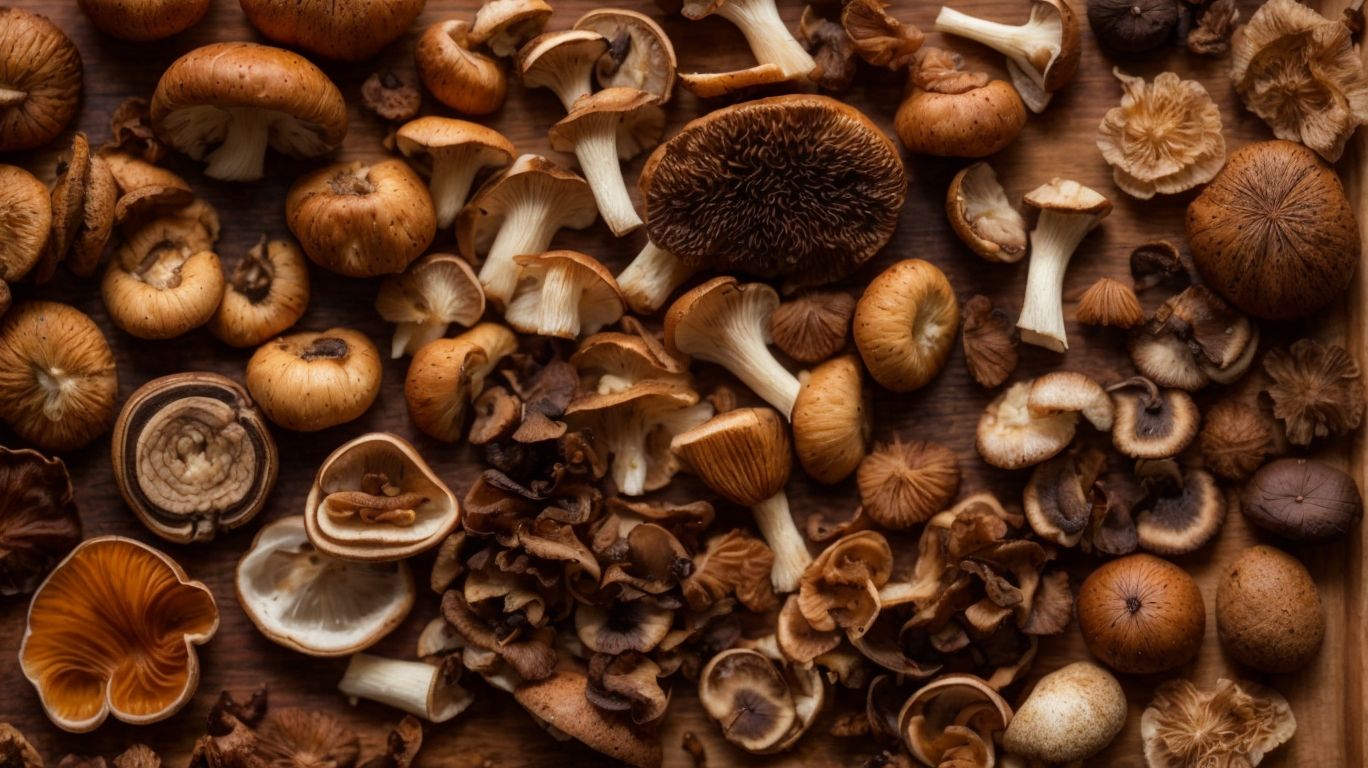
Credits: Poormet.Com – Roy King
Cooking with dried mushrooms offers several benefits, including a longer shelf life, intensified flavor profiles, and added nutritional value to your dishes.
One of the greatest advantages of using dried mushrooms in cooking is their extended shelf life. Unlike fresh mushrooms that have a short lifespan, dried mushrooms can be stored for months without spoiling, making them a convenient pantry staple.
The process of drying mushrooms concentrates their flavors, resulting in a more robust and intense taste. These enhanced flavor profiles can elevate the overall taste of various dishes, adding depth and complexity to your culinary creations.
Along with the flavor benefits, dried mushrooms are also packed with nutrients such as vitamin D, fiber, and antioxidants. By incorporating dried mushrooms into your meals, you not only enhance the taste but also boost the nutritional content of your dishes, promoting a healthier lifestyle.
Longer Shelf Life
One significant benefit of using dried mushrooms is their extended shelf life, which can be maintained through proper storage techniques.
Proper storage is key to preserving the quality and flavor of dried mushrooms. Airtight containers are essential to protect them from moisture and pests. Store them in a cool, dark place away from direct sunlight to prevent flavor loss and degradation. Humidity can cause mold growth, so ensure the storage area is dry.
Labeling containers with the date of storage can help keep track of freshness. Consider using vacuum-sealed bags to further extend shelf life. Avoid storing dried mushrooms near strong-smelling foods as they can absorb odors easily.
Intensified Flavor
Dried mushrooms offer an intensified flavor profile due to the concentration of their natural umami compounds when rehydrated through heat, creating a depth of taste in dishes.
When dried mushrooms are subjected to the rehydration process with a gentle application of heat, their umami essence blossoms, infusing dishes with a rich, savory undertone that enhances the overall culinary experience. This intensified flavor not only adds complexity but also adds a unique earthy note to various recipes.
Rehydrating mushrooms through simmering in broth or soaking them in warm water allows them to fully revive, unlocking their full potential.
Nutritional Benefits
Dried mushrooms offer nutritional benefits such as being low in calories and packed with essential nutrients, making them a healthy addition to your meals.
In terms of mushroom weight, dried mushrooms are a convenient option as they are lightweight and easy to store. A quarter-cup serving of dried mushrooms contains only about 25-30 calories, which makes them an excellent choice for those looking to manage their caloric intake. Despite their low-calorie content, dried mushrooms are rich in important nutrients like fiber, vitamins, and minerals. They contain unique compounds such as beta-glucans and antioxidants, which have been linked to various health benefits.
How to Store Dried Mushrooms?

Credits: Poormet.Com – Noah Hernandez
Properly storing dried mushrooms involves keeping them in airtight containers away from moisture and sunlight to prevent any grit or dirt contamination over time.
It is crucial to choose containers that seal tightly to maintain the mushrooms’ quality and flavor. Opt for glass jars or plastic containers with tight-fitting lids. Before storing, ensure that the mushrooms are completely dry to prevent mold growth.
- Avoid storing in paper bags or cardboard boxes as they can absorb moisture and lead to spoilage.
- Label the containers with the date of drying to track freshness and ensure you consume them within the recommended timeframe.
Keeping the dried mushrooms in a cool, dark place like a cupboard or pantry will extend their shelf life and preserve their delicate flavors for longer.
Proper Storage Techniques
To ensure the longevity and quality of dried mushrooms, store them in a cool, dry place, preferably in airtight containers, to maintain their flavor and texture for future use in dishes like Italian stew.
Proper temperature control is pivotal, as mushrooms are sensitive to heat and moisture, which can lead to spoilage and loss of flavor. Optimal storage conditions include keeping them away from direct sunlight and heat sources.
When selecting containers, choose glass jars or resealable plastic bags to protect the mushrooms from humidity and pests. Avoid using paper bags as they can easily absorb moisture and compromise the dried mushrooms’ quality.
Rehydrated mushrooms add depth and umami flavor to various dishes, such as creamy risottos, savory gravies, and hearty soups. Their earthy taste complements meat dishes like beef stroganoff or vegetarian options like wild mushroom pasta.
How Long Can Dried Mushrooms Be Stored?
Dried mushrooms can be stored for an extended period if kept in the best conditions, with some varieties retaining their quality for several months.
Ensuring that dried mushrooms are stored in a cool, dark place in airtight containers can significantly extend their shelf life. Different mushroom varieties have varying longevity when dried – for instance, morels and porcini can last up to a year or more, while chanterelles may lose their quality after several months.
In terms of rehydrating dried mushrooms, using hot water or broth can help revive their texture and enhance their flavor. Letting them soak for about 20-30 minutes allows them to plump up and become tender, ready to be used in culinary creations.
Conclusion and Final Thoughts
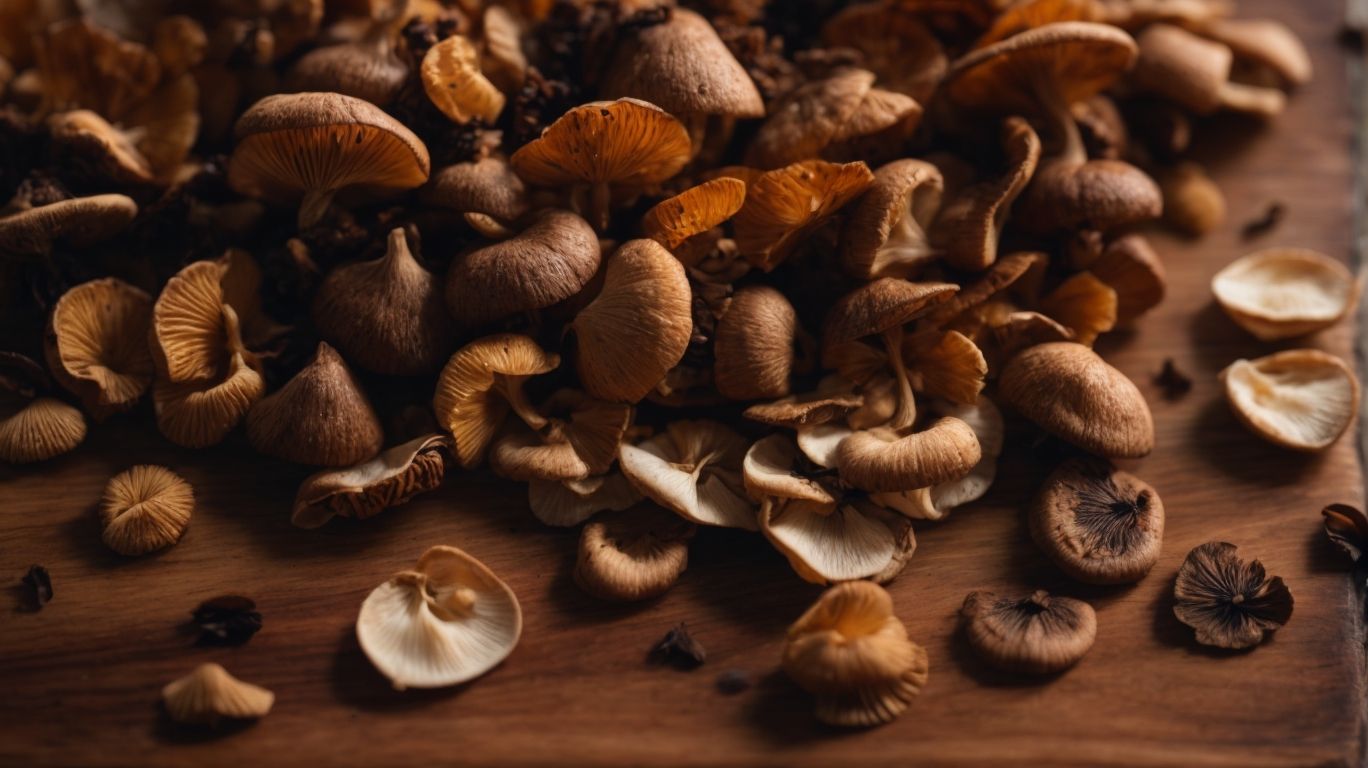
Credits: Poormet.Com – Terry Brown
Cooking with dried mushrooms opens up a world of culinary possibilities, adding depth and richness to your dishes that will leave you and your guests HUNGRY for more.
One of the key benefits of using dried mushrooms in your cooking is the concentrated flavor they bring to your dishes. The process of drying enhances the umami taste, giving your meals a robust and earthy profile. Whether you are making a hearty stew, savory sauces, or risottos, dried mushrooms can turn an ordinary dish into a gourmet experience.
Dried mushrooms have a longer shelf life than fresh ones, making them a convenient pantry staple. They are versatile and can be rehydrated with warm water before adding to your recipes, infusing them with an intense mushroom essence.
Frequently Asked Questions
1. How to Cook With Dried Mushrooms?
Dried mushrooms are a great addition to any dish, adding depth and intense flavor. Here’s how to easily cook with them.
2. What types of dried mushrooms should I use?
Some popular types of dried mushrooms include porcini, shiitake, and morels. However, you can use any variety that you enjoy.
3. Can I substitute dried mushrooms for fresh ones?
Absolutely! Dried mushrooms are a great substitute for fresh ones in recipes that call for cooking or rehydrating them. Just be sure to adjust the amount used accordingly.
4. How do I rehydrate dried mushrooms?
To rehydrate dried mushrooms, simply soak them in hot water for about 20 minutes. Once they are plump and soft, drain them and they are ready to use in your dish.
5. What dishes can I use dried mushrooms in?
Dried mushrooms are versatile and can be used in a variety of dishes, such as soups, stews, risottos, pasta dishes, and more. They are also great for adding flavor to sauces and gravies.
6. How do I store dried mushrooms?
Dried mushrooms can be stored in an airtight container in a cool, dry place for up to a year. You can also store them in the freezer for longer shelf life. Just be sure to rehydrate them before using in recipes.




